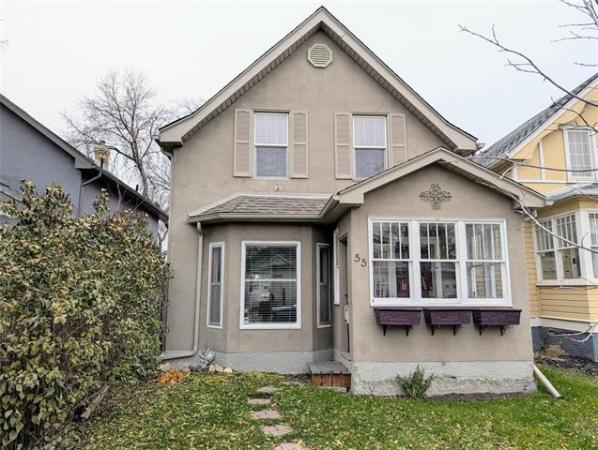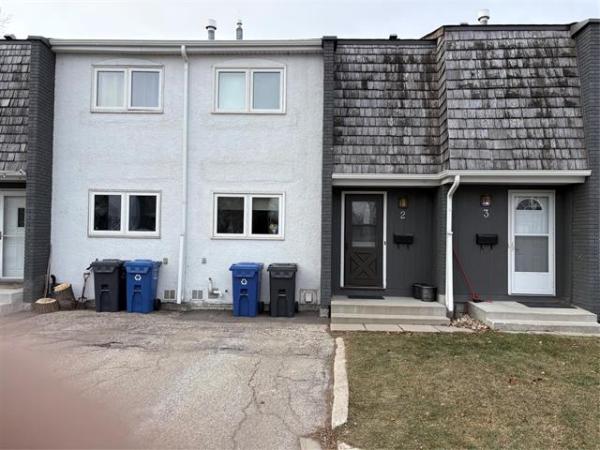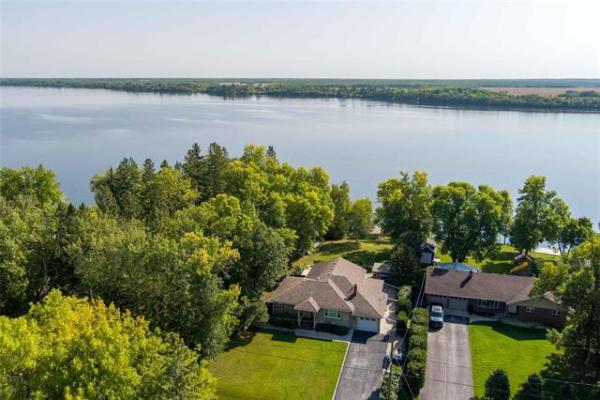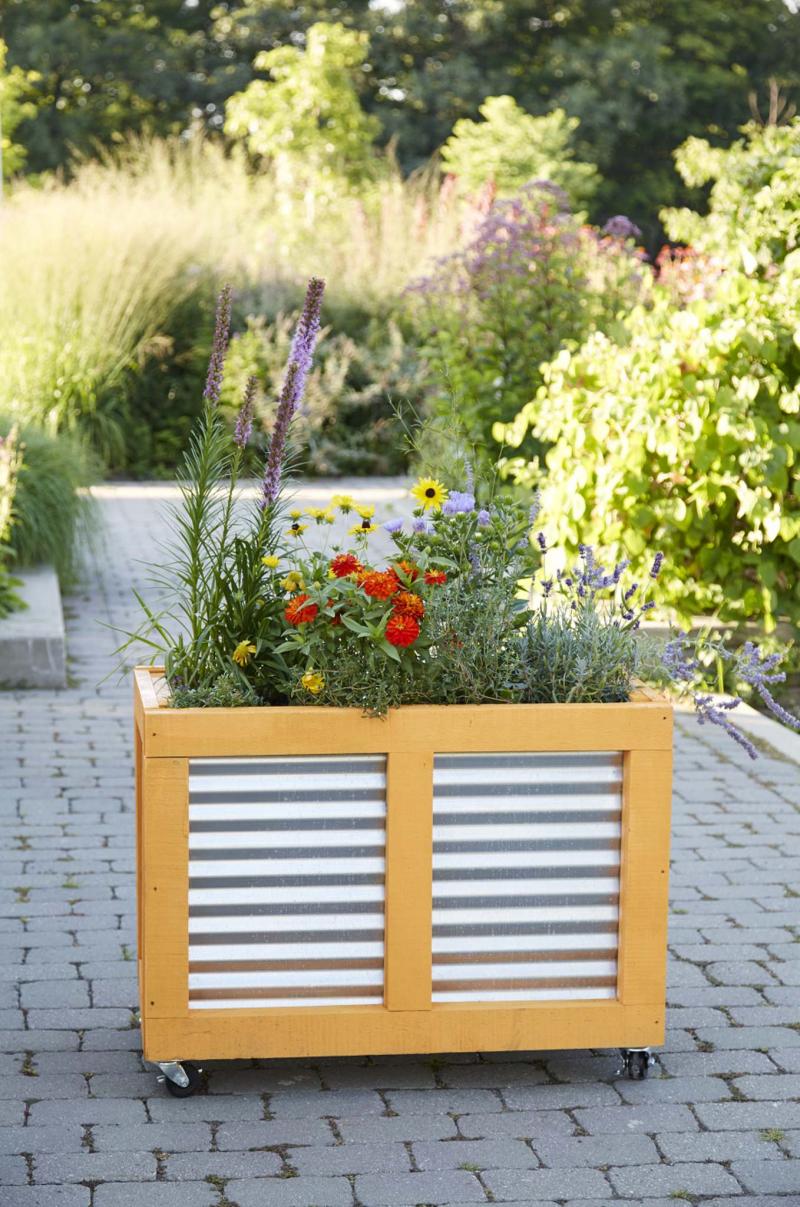
Donna Griffith
Incorporating corrugated steel in the design of your raised-bed planter gives it a modern, industrial look.
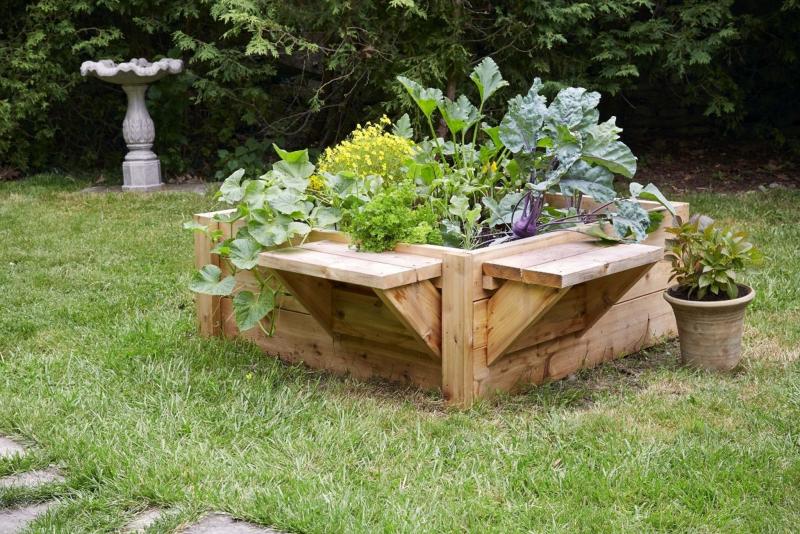
Donna Griffith
Add benches to your raised-bed garden to make planting and weeding easier.
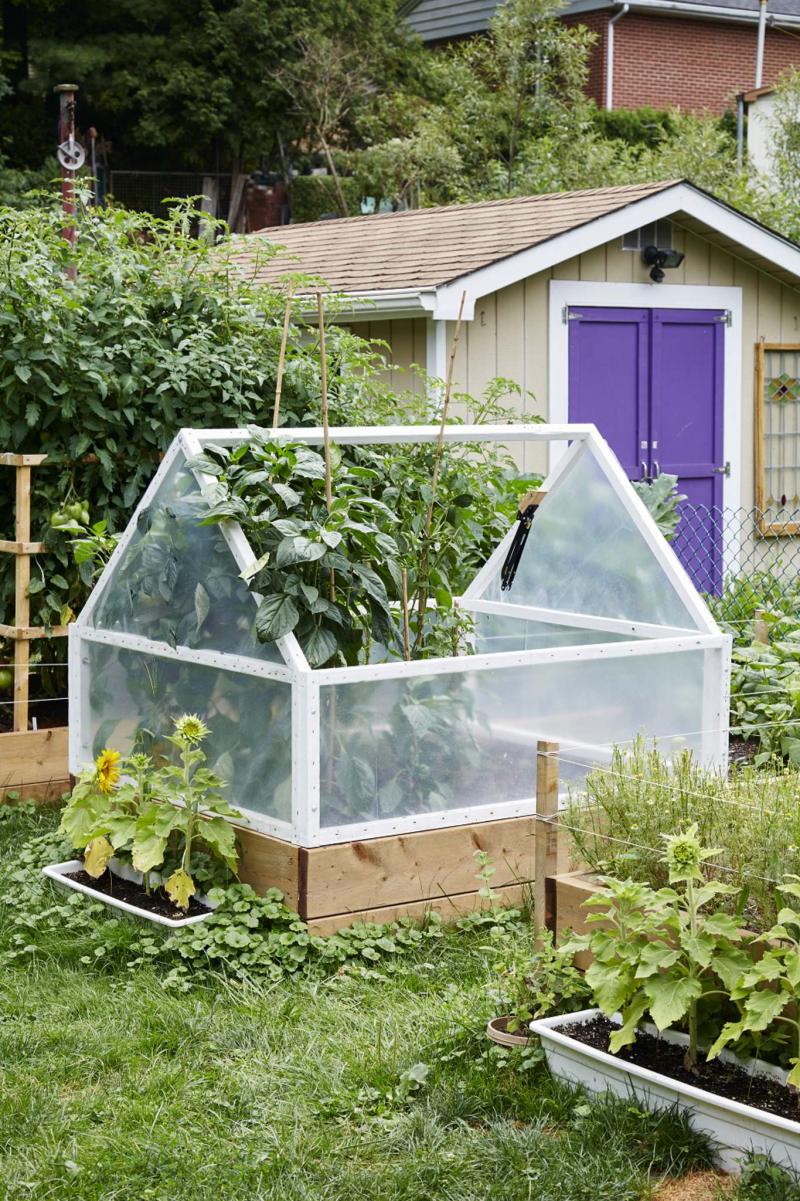
Donna Griffith
To extend your growing season in both spring and fall, add a row or greenhouse cover to your raised bed.
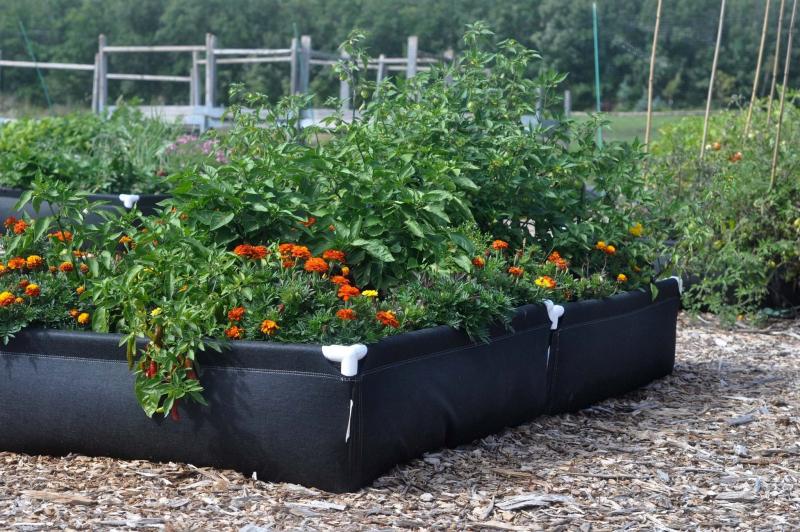
Dave Hanson
Geoplanters are made from a long lasting, breathable fabric that automatically root-prunes whatever vegetables or ornamentals are being grown in them.
Here’s the deal: Our love affair with growing edibles has surpassed the stage of brief encounter and graduated to a full-blown lifestyle choice. Everyone’s doing it and sometimes even in the strangest of places. It’s that simple.
For both the experienced gardener and the beginner, growing edibles comes down to time and accessibility. Raised-bed gardening has become one of the most popular solutions for growing edibles in small or inconvenient spaces, extending not only our ability to garden longer, but also better.
In addition to designing and building your own, ready-to-assemble kits abound. Finished projects offer both exciting innovation in styles and in use of materials. Indeed, the raised-bed garden has evolved to be an important design element in our outdoor spaces, both private and public.
Tara Nolan is the author of Raised Bed Revolution: Build It, Fill It, Plant It ... Garden Anywhere! (Cool Springs Press, 2016). In a recent phone conversation, Nolan — who is also co-founder of the website Savvy Gardening — says part of the appeal of raised beds is they make gardening possible in otherwise hostile environments.
Nolan, a 30-something who makes her home in Dundas, Ont., turned to raised-bed gardening several years ago as a solution to fighting with the hard-packed soil in her mature landscape. "Set your raised bed on top of poor quality, compacted or weedy soil," she says, "add a weed barrier, and fill the raised bed with your own mix of fresh, nutrient-rich soil."
"So long as a location has adequate sunlight," Nolan says, "raised beds can be placed anywhere, including a front yard, deck, rooftop, or concrete driveway." They also make gardening possible on uneven or sloped terrains through the use of tapered sides and corner stakes.
Raised beds aren’t anything new (they were a fixture, for example, in medieval kitchen gardens), but many of today’s cool interpretations incorporate a range of materials from corrugated steel for an industrial look to specialty fabric. For a wood and metal raised bed, Nolan purchased sheets of corrugated steel and had them pre-cut to specific dimensions. After constructing a wooden framework, Nolan attached the sheets with screws from the inside and added rolling and locking casters.
Lack carpentry skills? Ask to have your lumber pre-cut at the lumber store, recommends Nolan, who uses only untreated wood so as to eliminate any risk of toxins leaching into garden soil. Naturally rot- and insect-resistant cedar is an excellent choice for constructing wooden raised beds. In one example, for a cedar raised bed featured in her book, Nolan incorporated the addition of benches — perfect for perching as you weed and plant.
Nolan’s book includes step-by-step instructions as well as photographs and descriptions of numerous design options. She walks the reader through the various considerations of height for ease of accessibility, but also the minimum requirements for depth and proper spacing depending on the type of vegetables being planted.
I was intrigued by the example in the book of a wooden vertical herb planter with angled shelves, four legs and solid back supports. Designed for small spaces, this imaginative raised planter resembles a ladder and is topped with a rectangular planter for more planting possibilities.
Doubling as raised beds, galvanized stock tanks used for watering livestock are one of the trendier options. The zinc coating resists corrosion. Should there be any concern about the potential for zinc to leach overtime into the soil? Studies have shown the amount is very minimal, however a thick plastic liner can be inserted into the tank or line it with landscape fabric. Nolan recommends the use of binder clips or clamps to hold the fabric in place until the stock tank has been filled with soil. Generally, there is a plug at the base of the stock tanks — simply remove it and use a drill to create a series of drainage holes.
Today, Nolan’s backyard is home to numerous raised beds, large and small, as well as a cold frame and a handy lettuce table made from an old four-legged table that was missing its top. A fan of upcycling, Nolan has even planted vegetables in a small wash basin that she found at an antique market. Elevate your raised bed planter to the height that suits you best.
Fabric may seem to be the most unusual material for a raised-bed garden. At Sage Garden Greenhouses, owner Dave Hanson has assembled as many as 20 fabric planters, known as geoplanters, on his property. Made from a breathable, woven textile, the geoplanter is 28 centimetres deep and comes in two sizes — 122 by 122 cm or a larger, rectangular version that measures 122 by 243 cm. Long lasting, Hanson leaves them in place for the winter, soil and all, and doesn’t bother to cover them with a tarp.
"The older soil does become compacted and depleted of nutrients over time," Hanson says. Each spring, he topdresses with a layer of fresh compost. In addition to the ease of assembly and excellent drainage, Hanson says that since the roots of plants touch the edges, Geoplanters have the distinct advantage of automatically root-pruning whatever vegetables or ornamentals are being grown. The result, he says, is improved air flow into the root zone.
The capability to extend the growing season is perhaps the most persuasive argument for raised-bed gardening. Nolan uses floating row covers in spring to give seeds or seedlings a head start and again in fall to protect veggies from an early frost. In her book, she includes plans to recreate a greenhouse that fits over a raised bed.
Rod Kueneman is the vice-president of the South Osborne Permaculture Commons, a network of community garden spaces in Winnipeg’s Lord Roberts and Riverview neighbourhoods that includes numerous raised beds. Kueneman says volunteers have made plastic row covers for the raised beds. "The heat that is generated beneath the plastic warms the soil," Kueneman says.
In early-to-mid-November, Kueneman and his fellow volunteers planted a number of cold-tolerant seed varieties, including arugula, beets, radishes and carrots. The unseasonably warm temperatures in November (the warmest on record in Winnipeg since 1872, according to Environment Canada) caused some concern that the seeds might begin germinating. It became necessary to open the ends of the plastic row covers. The row covers are left on for the winter. Kueneman treks out to the raised beds throughout winter to remove any accumulation of heavy snow so the covers won’t collapse from the weight.
In spring, thanks to the head start provided by the raised beds and row covers, volunteers will harvest early and be ready by June to begin planting their next crop.
If a raised-bed kit is on your Christmas wish list, consider installing a drip irrigation system next spring prior to adding your soil. Pre-designed DIY kits are available and include everything you need.
colleenizacharias@gmail.com
Event Listing
The Manitoba Horticultural Association will host its 119th annual convention on January 26, 27, and 28 in Killarney, Man., at the Killarney United Church, 432 Williams Ave. To register, or for more information, contact the MHA office at 204-256-2745 or email m.h.a@shaw.ca. Visit icangarden.com/clubs/mha.

